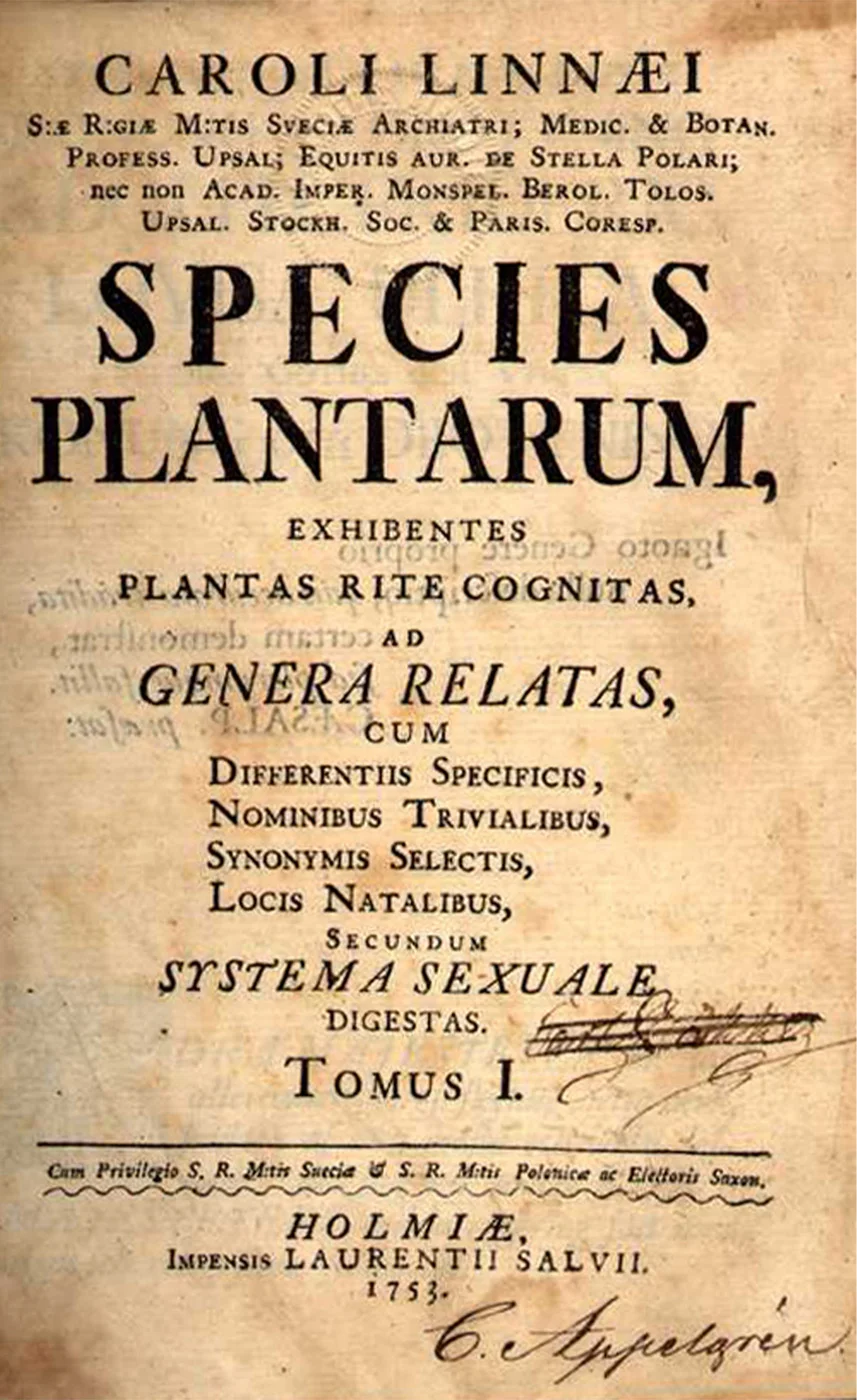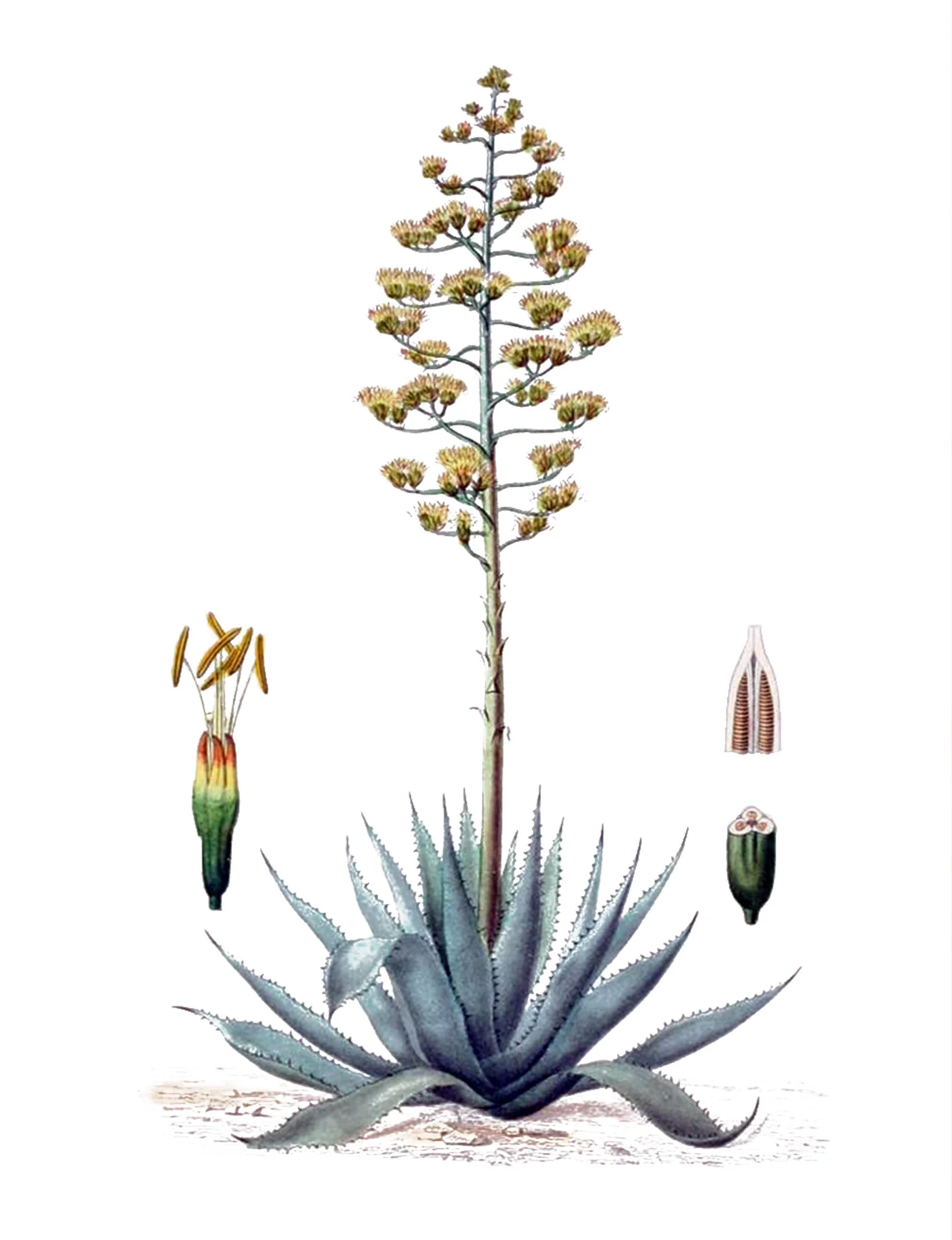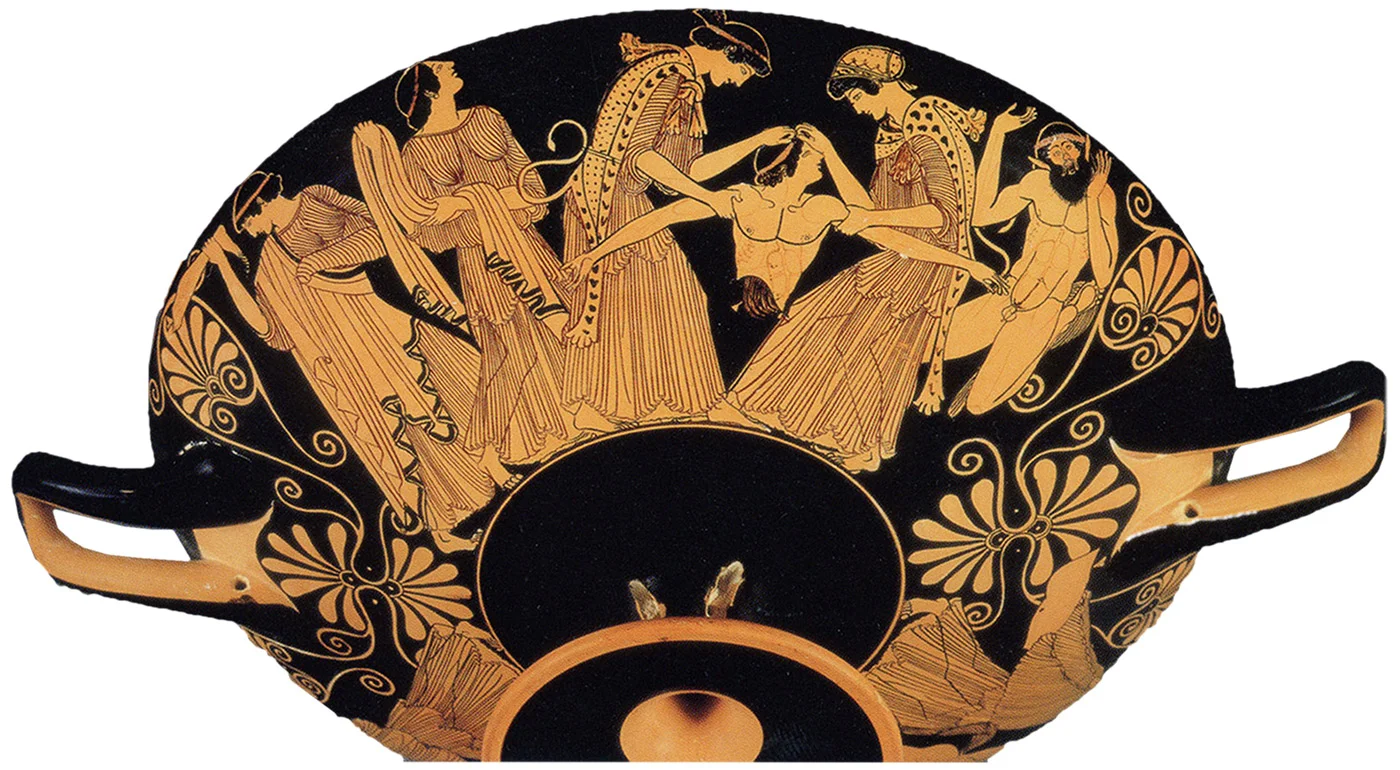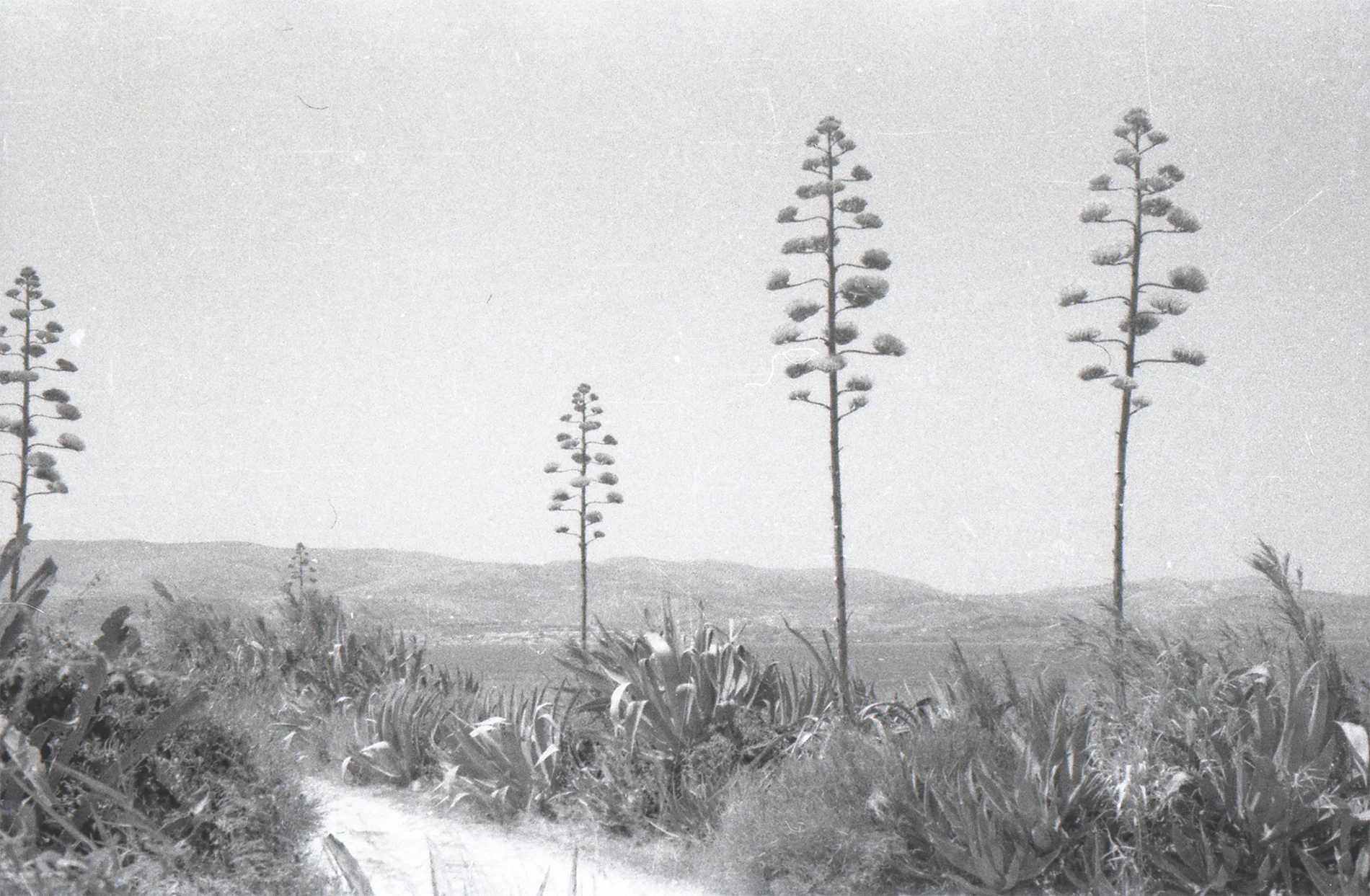scroll


The Agave americana arrived in Europe in the 15th century. It is said that Christopher Columbus encountered the plant during his first voyage to the New World in 1492 and brought it to Europe in 1493. Botanically, it was first described by Carl Linnaeus in his Species Plantarum in 1753, where it was also given its Latin name. The plant acclimatized excellently to southern Europe and spread widely. Today, it is a characteristic plant of the Mediterranean landscape. In Greece its common name is "athánatos" (immortal). On Kefalonia it can be found in many areas, with its presence being particularly remarkable and impressive around the Castle of Saint George.


The Latin name of the plant, Agave, comes from Greek mythology. Agave was the daughter of Cadmus and sister of Semele, the mother of Dionysus. Her son, Pentheus, became the king of Thebes, and she killed him while in a state of frenzy because he did not allow the worship of Dionysus in the City.

The Aztecs in Central America regarded these plants as a gift from the gods. Tequila, the famous alcoholic drink from Mexico is produced from the species Agave tequilana, and the alcoholic beverage mescal is made from many different species of Agave. Rope can also be made after processing the leaves.


During a prolonged period of scarcity of raw materials on Kefalonia, the peasant women who lived around the Castle of Saint George, which was then the island’s capital, found ways to use the leaves of the "immortal" plant. After hours of processing, they would separate the fibers of the older leaves to make thread. This was then made into rope called "spartsína," mainly used to bind tin cans and sacks onto donkey saddles. These women also embroidered with fine thread to create clothes and lace, which were commissioned by aristocratic families. Unable to access thread due to the blockade of the port of Argostoli, they used the immortal plant’s fibers for their handicrafts, specifically working on two patterns: the small rose and the spiral. Testimonials indicate that creations from the "immortal" plant continued until the end of the 20th century, especially in the area of Livathos, where locals still remember shoes made from the plant.
The beautiful embroideries made from the "immortal" plant are unique and belong to Kefalonia's cultural heritage. You can admire them up close at the Charokopios Workshop in Argostoli which strives to preserve this art to this day.
The "immortal" is a succulent plant, not a cactus, as many people believe. It blooms and bears fruit only once in its lifetime, creating a very tall and impressive inflorescence. This typically happens after 10-20 years of growth, depending on the microclimate of the area. The flowers are hermaphroditic, meaning they have both male and female organs, and are pollinated by moths, bats, hummingbirds and bees. Additionally, they are fragrant and yellow-green in color. The plant dies after the fruit ripens, but leaves behind small new plants that develop from lateral shoots, and in this sense it never truly dies. It is likely that the plant got its name "immortal" because of this.